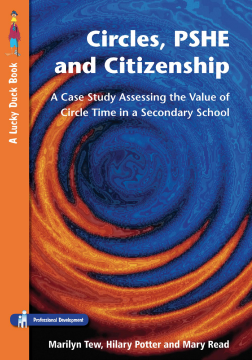
BOOK
Circles, PSHE and Citizenship: Assessing the Value of Circle Time in Secondary School
Marilyn Tew, Mary Read, Hilary Potter
(2007)
Additional Information
Book Details
Abstract
The circle time teaching strategy is used extensively and successfully in primary schools, but secondary settings often find it difficult to implement. In this book, the authors advise on how a circle time programme can be developed in secondary schools, involving both staff and students. Drawing on their experience of using circle time to deliver the PSHE and Citizenship curricula, they present a framework that that can be followed or adapted by other secondary schools. The development includes: - consultation with students - choosing the topics for the programme of study - lesson plans written in the circle format - recommendation for links within the wider school community and other agencies. A CD-rom is included, providing lesson plans, circle time games, and advice on inclusion, group work and strategies. Any secondary school practitioner looking to implement a circle time programme in their school will find this a useful and practical resource.
Table of Contents
| Section Title | Page | Action | Price |
|---|---|---|---|
| Acknowledgements vi | |||
| Foreword vii | |||
| Preface viii | |||
| Chapter 1 Introduction to fabric manufacture 1 | |||
| Chapter 2 Basic principles and processes of fabric manufacture 7 | |||
| Chapter 3 Simple methods of determining the quality of fabrics 26 | |||
| Chapter 4 Types of hand-looms and knitting machines 32 | |||
| Chapter 5 Planning for production 37 | |||
| Chapter 6 Equipment suppliers 42 | |||
| Chapter 7 Sources of further information 43 | |||
| Appendices | |||
| 1 Woven cotton fabric specification | |||
| 2 Comparison of Tex with other count systems | |||
| 3 Cloth (worsted) setting chart : yarn count/cm | |||
| 4 Cloth (cotton) setting chart : yarn count/in | |||
| 5 Glossary |
